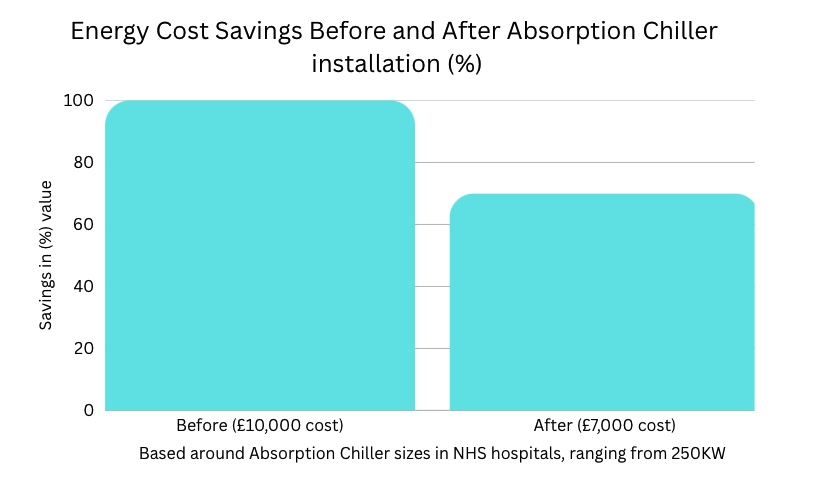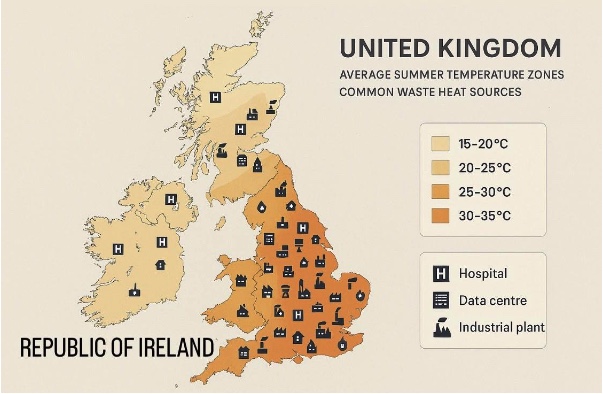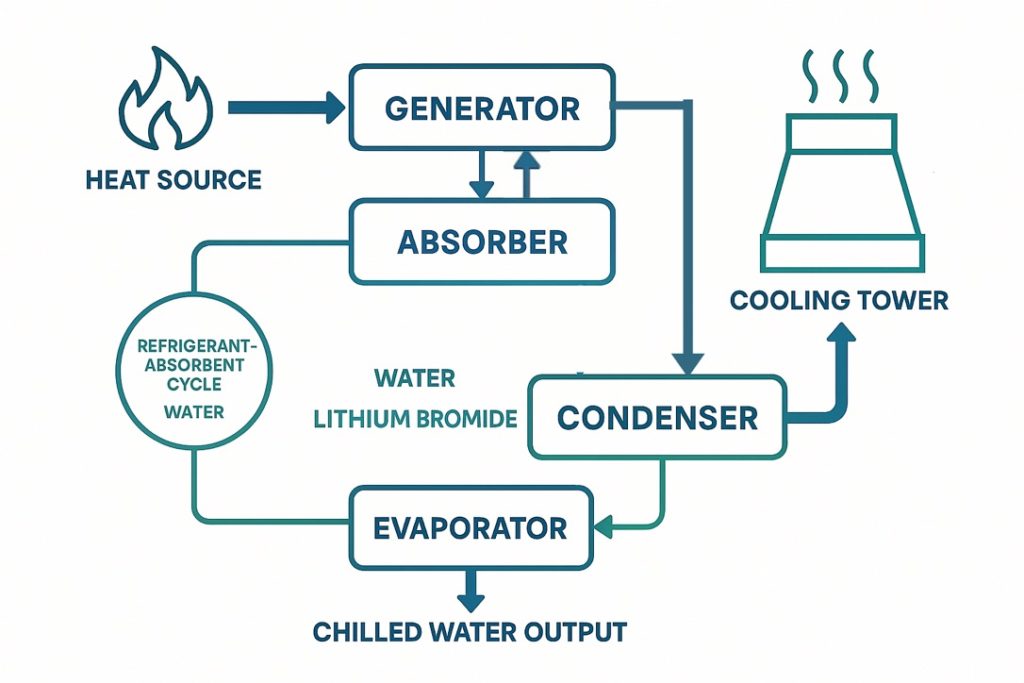Are Absorption Chillers Suitable for UK Commercial Buildings?- Practical Benefits & Key Considerations
In the evolving landscape of UK commercial buildings, choosing the right cooling system is more important than ever. With the twin pressures of rising energy costs and decarbonisation targets, absorption chillers have emerged as a practical and efficient solution—especially in 2025’s market.
What is an Absorption Chiller?
Unlike traditional electric chillers that use mechanical compressors, absorption chillers use thermal energy—often sourced from waste heat or renewable thermal inputs—to power the cooling process. They typically rely on a water and lithium bromide refrigerant-absorbent pair, converting heat into chilled water for cooling.
Why the UK Climate Favours Absorption Chillers?
The UK’s temperate climate, with average summer highs between 15°C and 35°C, reduces risks like performance drops common in hotter regions. Absorption chillers shine in buildings with access to waste heat—think hospitals with combined heat and power (CHP) systems or data centres that generate excess thermal energy. For example, an NHS hospital integrating an absorption chiller with its CHP system cut cooling energy costs by 30%.
District cooling networks also benefit. A 5000kW absorption chiller in Barcelona’s district network reduced operational costs by 20%, a model UK cities are exploring.



Key Considerations:
- Space: Absorption chillers need a larger footprint than electric chillers and require bigger cooling towers.
- Maintenance: Twice-yearly professional servicing is crucial to maintain lithium bromide solution quality and prevent leaks.
- Integration: Advanced controls optimize performance, especially under variable load conditions typical in commercial buildings.
Is it Right for Your Building?
If your facility has consistent waste heat and room for installation, absorption chillers offer compelling energy savings and carbon reduction benefits. Smaller buildings or those without waste heat sources may find electric chillers or air source heat pumps more suitable.
Want to dive deeper? Download the full Vamtec Absorption Chiller Guide (1500 words) to explore all technical insights, case studies, and decarbonisation strategies in one comprehensive report.
Ready to assess your building’s suitability? Contact Vamtec for a tailored consultation to find the perfect cooling solution.
FAQ:
Q1: What is an absorption chiller?
A: An absorption chiller is a cooling system that uses heat energy—often from waste heat or renewable sources—instead of electricity to produce chilled water for air conditioning.
Q2: Why are absorption chillers suitable for UK commercial buildings?
A: The UK’s moderate climate and availability of waste heat from CHP systems or industrial processes make absorption chillers an energy-efficient and cost-saving cooling option.
Q3: What are the main maintenance requirements for absorption chillers?
A: Regular maintenance includes checking for leaks and maintaining lithium bromide solution quality, typically requiring professional servicing twice a year.
Q4: Do absorption chillers require a lot of space?
A: Yes, they generally have a larger footprint and need bigger cooling towers than electric chillers, so space planning is essential for urban or space-constrained sites.
Q5: Are absorption chillers suitable for small buildings?
A: They are best suited for buildings with consistent waste heat. Smaller buildings without waste heat may find electric chillers or air source heat pumps more practical.
